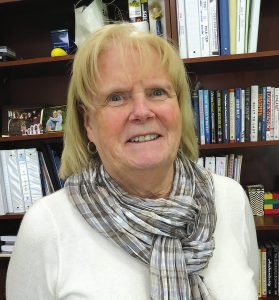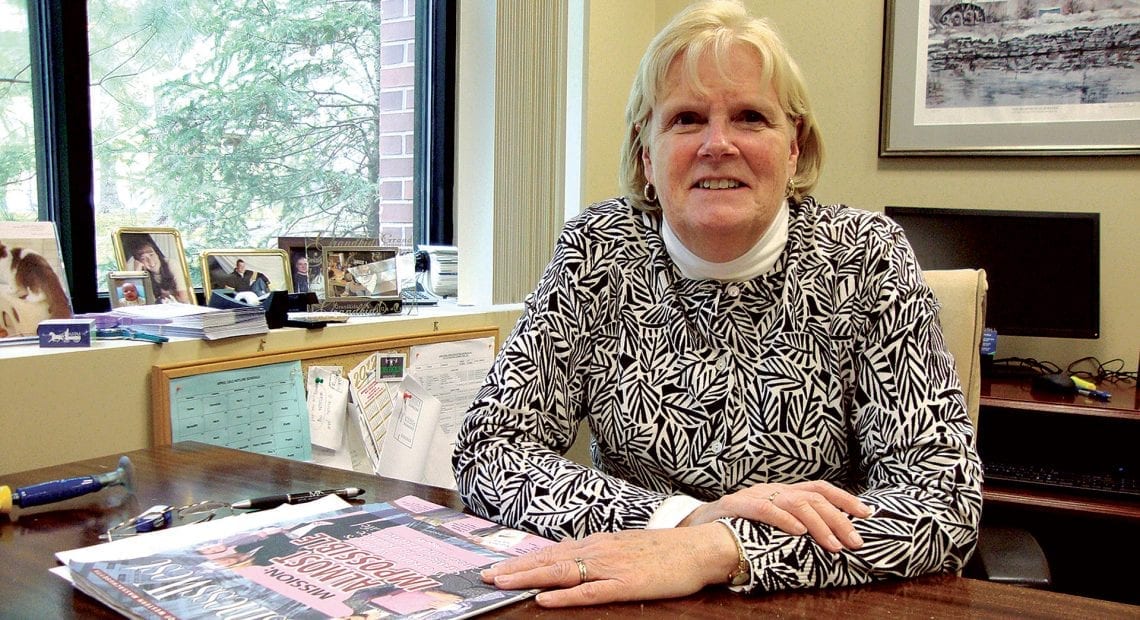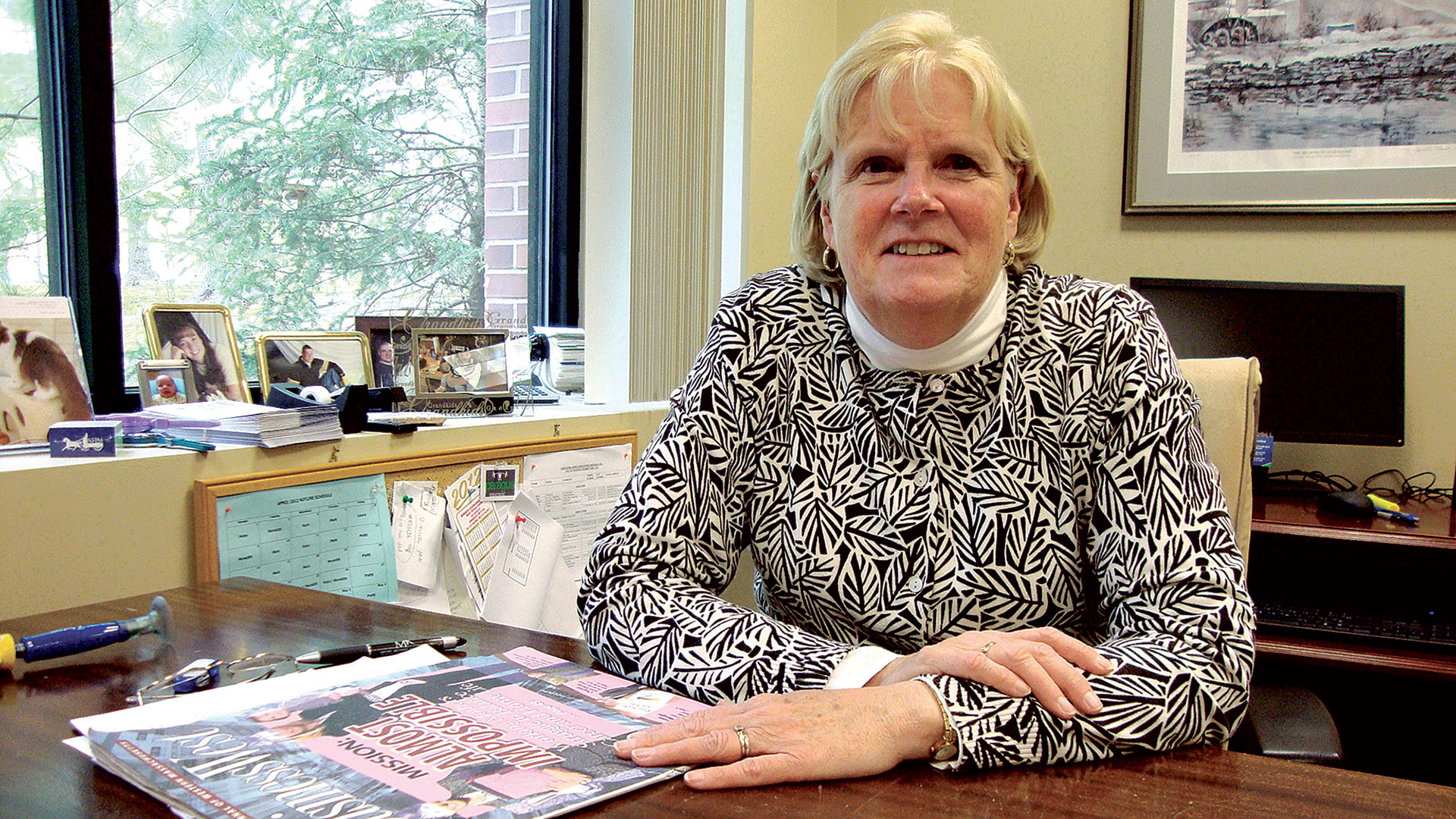What’s in a Job?
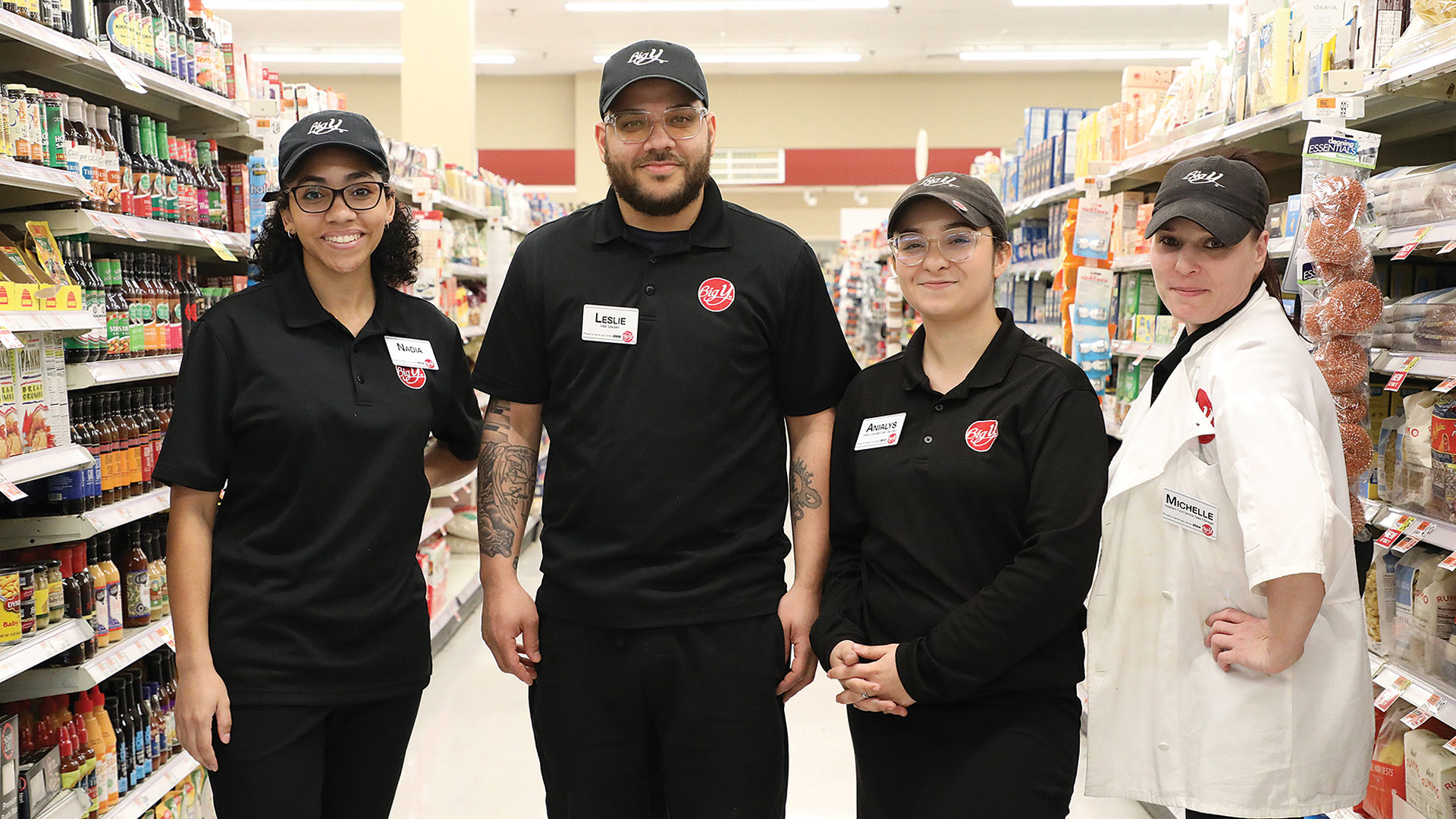
From left, Nadia Doyle, Leslie Soto, Anialys Gomes, and Michelle Martin, team members at Big Y’s St. James Avenue location in Springfield.
Michael Galat says Big Y has a story to tell, and its employees do, too. And sharing those stories goes a long way toward building and retaining workers in a job market slanted toward job seekers to an unprecedented degree.
“It has been a challenge. Everyone is fighting for top talent,” said Galat, Big Y’s vice president of Employee Services. “We’ve adapted by leveraging our existing workforce to share stories of why they work for Big Y. We’ve got a lot of long-tenured, dedicated people working here, and they’re our best recruiters. We focus on their testimonies, telling their stories about why they want to work at Big Y.”
The supermarket chain has bolstered its workforce efforts in other ways, to be sure, from streamlining the application process to college internships that expose students to career opportunities to hosting a recent series of on-the-spot hiring events. “That’s been a home run for us. Recruitment is an ongoing effort,” Galat said.
But the stories are important, he added, noting that it’s important to build a culture where people want to work when they have other options.
“We’ve updated our career page and social platforms with people’s testimonials — why they like working for Big Y, what makes us different, the flexibility we provide. All those things go a long way to retain people and attract new talent.”
Amy Roberts, executive vice president and chief Human Resources officer at PeoplesBank, says both the company and its employees have a story to tell, and creating the right cultural fit is key to building a stable workforce.
“We’re trying to be up front with individuals about our core values and who we are and that we’re looking for people who are interested in being a part of that,” she explained. “So the process is focused around asking the candidate to tell us stories, tell us things about themselves. We believe that’s really critical.”
After all, it’s not just about bringing in talent, but creating a team for the long run.
Amy Roberts
“I think it’s important not to oversell yourself and make the position or company something they’re not; if you do, ultimately a person is not going to stick around.”
“I think it’s important not to oversell yourself and make the position or company something they’re not; if you do, ultimately a person is not going to stick around,” Roberts said. “We try to be up front about who we are as an organization, what’s important to us, how we view success here, and hope that’s best match for the individual. We spend time in the process talking about that.”
For this issue’s focus on employment, BusinessWest spoke to five area employers — Big Y, PeoplesBank, the Center for Human Development (CHD), Bulkley Richardson, and Health New England (HNE) — to get a feel for how challenging the much-talked-about workforce crunch has been for their organizations, and how they’ve shifted their hiring and retention strategies to deal with it.
Carol Fitzgerald, vice president of Human Resources at CHD, admitted that 2021 was difficult, but “I feel like 2022 has gotten better, though there are still some challenges. In 2021, we were losing a lot of folks; it was not only hard to get folks, but our folks were making the choice to leave the field.
“As a large, human-service, behavioral-health organization, we are essential workers, and we work face to face with folks anywhere from birth to elders,” she explained. “And I think a lot of people were deciding during the pandemic not to do this work anymore. So we lost ground in 2021, but we’re gaining ground again. I feel optimistic; it feels less frenetic than it did last year, and it feels like things are improving. We’ve gained about 100 employees over 2021.”
Many of the current challenges are geographic, especially in rural settings, where CHD has dozens of locations. “It’s a lot of geography to cover, and there are fewer people in more rural places, so we’re having a harder time finding folks to do the work.”
Betsey Quick, executive director at Bulkley Richardson, had one of the most positive stories to tell about her law firm’s workforce situation, but, like at CHD, 2021 saw some turmoil.
“That was an unduly interesting time for us, as COVID made people retire faster,” she told BusinessWest. “People who had worked here 10, 20, even 40 and 50 years re-evaluated their work-life balance and said, ‘I don’t need to work until I’m 70. I want to spend money and travel; life is short.’ So we had a slew of retirements we wouldn’t have had, and that punched up our needs quite a bit.”
Carol Fitzgerald
“I think a lot of people were deciding during the pandemic not to do this work anymore. So we lost ground in 2021, but we’re gaining ground again. I feel optimistic; it feels less frenetic than it did last year, and it feels like things are improving.”
When the firm started ramping up hiring last year, “all the news in every sector was stating how employees were being poached and salaries were way up; it was an employees’ market. I was fully prepared to have a difficult time because we needed attorneys, we needed staff, we needed management,” she went on. “And for maybe the first three months, I saw the tightness in the market. We weren’t getting responses. We considered going out to recruiters, which we never had to do here. But after about three months, résumés started flooding in.”
Passion for Purpose
Sarah Morgan, director of Human Resources and Organizational Development at Health New England, noted that the Great Resignation has affected all employers, but it has also been an opportunity to recruit talented people who are looking for new opportunities or are rejoining the workforce. And many are looking for greater purpose in their jobs.
“This is a competitive recruiting environment we face today; however, Health New England employees know they are helping our members to live more healthful lives and improving the health and well-being of the communities we serve,” she said. “Ultimately, people connect to our role as a hometown not-for-profit health plan and are excited about the possibility of joining that cause.”
At the same time, the pandemic showed all companies how much employees — both current and prospective — value flexibility, and Health New England was no exception.
“Even before the COVID-19 pandemic emerged, we recognized that our employees have different needs, such as around childcare, eldercare, transportation, and the like,” Morgan said. “We respect the individual needs of our staff members and offer flexibility when possible, including the opportunity to work primarily remotely when the business needs allow.”
Betsy Quick
“You don’t have to work 6 in the morning to 12 at night and drive people into the ground. People want something different.”
Galat agreed. “We’re highly focused on retention, so we provide flexible work schedules and work-life balance, which is very important in this day and age. People have busy lives; we understand and that try to provide that flexibility for childcare, eldercare, school activities, sports … those things are important, and having that ability to balance their personal life with work is more important than ever.”
At CHD, Fitzgerald added, “we definitely know flexibility is really something people are looking for. While we’ve always tried to be flexible, our jobs are face to face with people for the most part, so we need to be in certain settings. However, during the pandemic, we went to telehealth, and we are trying to maintain a small bit of flexibility for telehealth. Going forward, especially in remote settings, that might work best for us. For example, a clinic in Orange is posting for a position that can be primarily remote. Up there, our managers are willing to talk about any and every way to get somebody to come into work, whether that’s remote or a flex schedule where they can; they’re trying to be creative on an individual basis.”
She added that competition has changed over the past couple years as well. “A lot of service industries are paying a lot more, really crazy rates. So we had to get creative. We offer a lot of hiring incentives and bonuses to come in, and when our employees refer folks. We’re trying to be creative from a compensation standpoint as well.”
Galat says Big Y hosts employee roundtables and focus groups and conducts surveys to get feedback on how the work environment can improve and what employees are looking for, and that information is used as a retention tool. The company also implemented a wage increase in July that impacted 75% of the hourly workforce.
All these efforts are critical because, despite some success stories with hiring, the Great Resignation and a generation of young workers who feel they know their value and want to assert it have created a smaller pool of talent to draw from.
“The highly technical or skilled positions have gotten even harder to recruit for,” Roberts said, “because there’s probably a handful of people who have a certain skill you’re looking for, and they’re either going somewhere else or already have a job and are perfectly happy where they are. Trying to figure out recruiting for those positions has been tricky.
“We’ve engaged recruiting partners and firms to broaden our scope,” she went on. “We’ve had people express interest in 100% remote, and we don’t operate that way, but at the same time, managers who said for years, ‘I want them here on site’ are now open to a more flexible work arrangement, seeing how difficult it is to get people to fill positions.”
Meanwhile, Roberts said, “I think our benefit programs are some of the best around, and we’re always looking at that and asking what else we can be doing. How do we help our people learn and build a career with us? How can we bring in more educational opportunities and help them build their career paths and help them see they have a future here? That goes a long way toward retention, but also from a recruiting standpoint, people want to know they have growth potential with your company. Identifying that process definitely has been key for us.”
Culture Counts
As Bulkley Richardson has sought to grow, Quick said, it was clear that “we have a really strong older workforce and a really strong middle, and we didn’t have such a strong younger workforce. So part of our succession plan is to keep that younger personnel coming up behind the bigs so they garner all that knowledge.”
One strategy to bring in young lawyers has been a summer associate program that was revived a few years back. After on-campus interviews and an in-depth review process, three to five candidates are selected every summer, and at the end of the summer, if the fit is right, offers are extended. Of eight offers so far, seven are coming back, and the other one took a clerkship and plans to be back at Bulkley when it’s over.
“We feel like this is a desirable place to work,” Quick said. “There’s been a lot of effort from our executive committee to punch up our vibe so it’s about the humans that work for us, not just about billable hours like a lot of big law firms in big cities. You’ve got to have that component, but you don’t have to work 6 in the morning to 12 at night and drive people into the ground. People want something different.
“COVID has taught us that Bulkley Richardson has always had a super strong family vibe,” she added. “We appreciate your personal time, what happens to you in your life. We really feel that’s paying off. We’re good lawyers and good people, and I feel like this is a positive hiring time for us.”
Galat agreed that culture is key.
“We have employees ranging from 16 to 85. Our people make the difference. We look for individuals that enjoy working with people. This is a people business. We want individuals that want to learn and grow and want to develop others, want to provide exceptional customer service and support our inclusive and belonging culture. Through our employee resource groups, employees share ideas and have a voice in business initiatives and each other.”
At Health New England, Morgan said, “we have been more focused than ever on recruiting people with diverse identities and experiences. More than ever, people want to work for companies that value them for who they are and empower them to bring their full, true selves to their work. We see strength in that and want employees from all backgrounds so we can better serve customers from all backgrounds.”
To that end, Health New England aims to deepen its relationships within the community through participation in local cultural events, job fairs, leadership programs, sponsorships, and more, she noted.
Getting back to the idea of the right cultural fit, Fitzgerald said CHD isn’t looking to hire just anyone, even in a tighter-than-usual market.
“We want the soft skills, the people skills. the relationship skills. That’s important not only for the work we do, but for being able to work with folks who appreciate each other and appreciate differences and have great communication skills and can manage different conversations. These are the kinds of things we’re looking for aside from just technical skills. It’s got to be the right fit.”
After all, she added, the company can train employees on certain tasks, but soft skills and a cultural connection are more organic.
“To have the right mindset about work and fit into that culture, I think those are things that are really important to our people. They care about who they’re working with, who they’re working for, and that translates to how we treat clients and quality of care. It really matters.”
Joseph Bednar can be reached at [email protected]



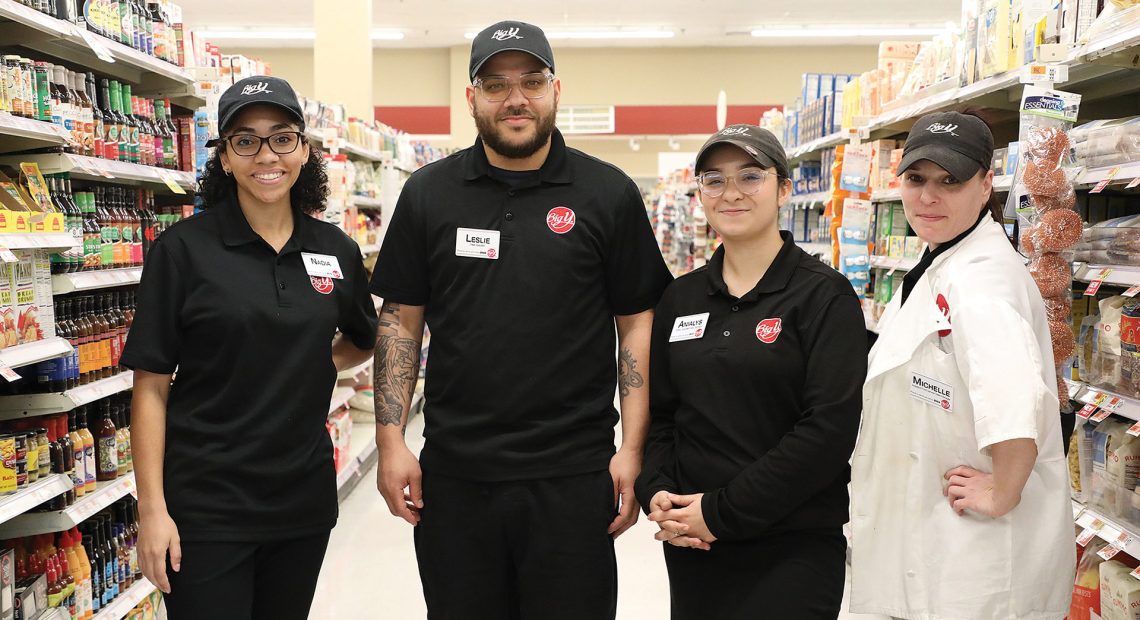



 “From a business perspective, there are advantages and disadvantages to how a company classifies its workers.”
“From a business perspective, there are advantages and disadvantages to how a company classifies its workers.”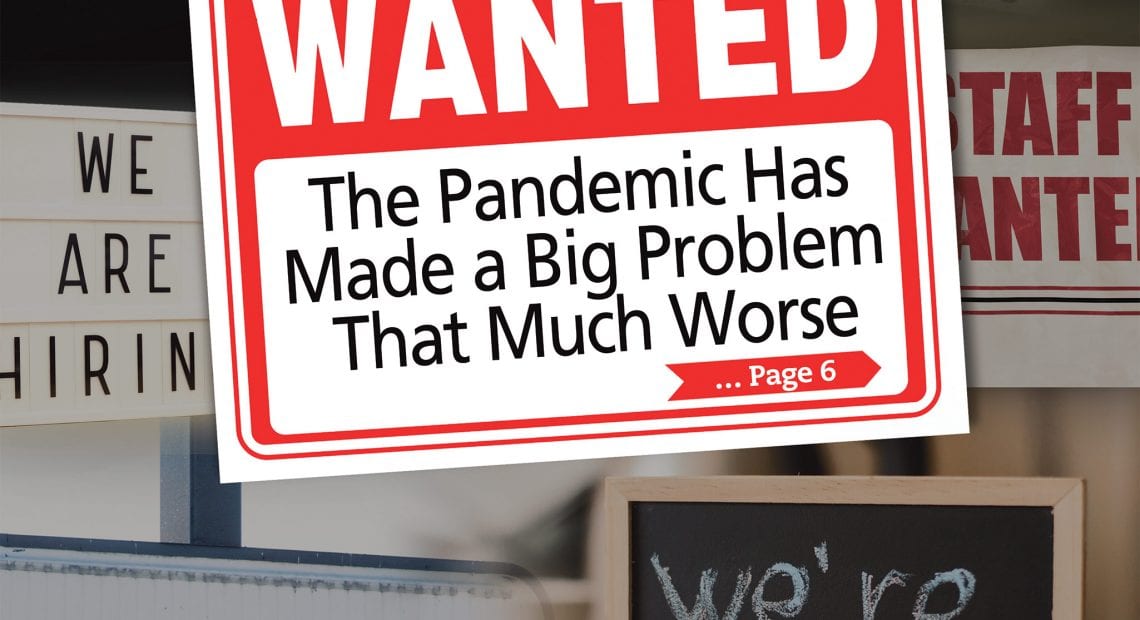
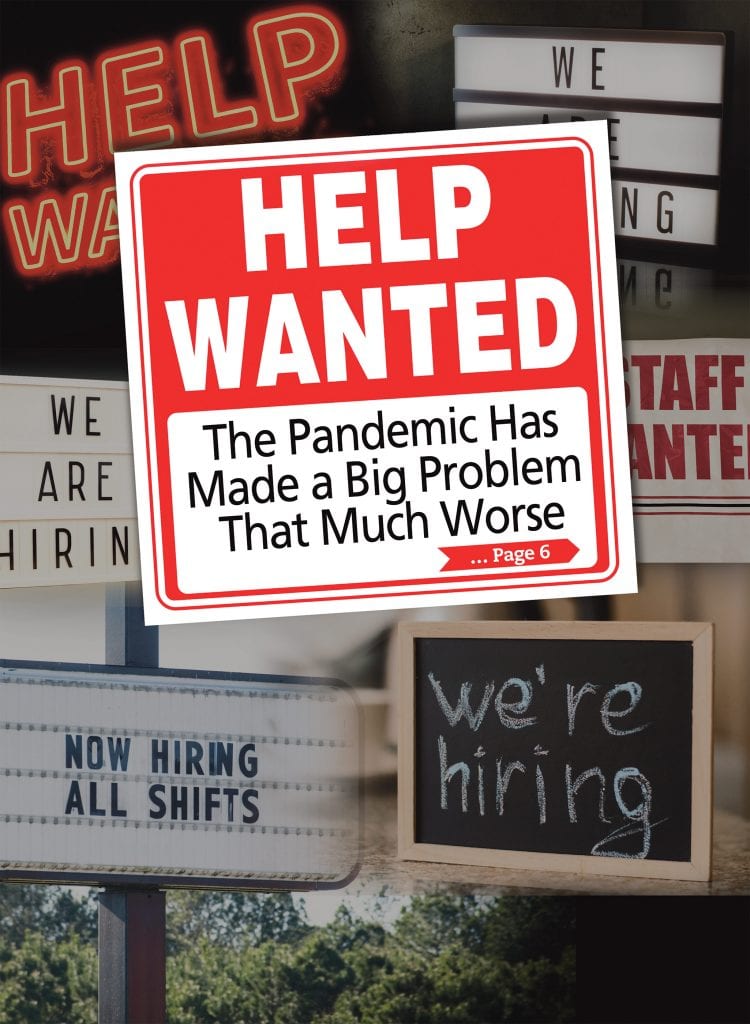 Long before COVID-19 arrived in Western Mass., businesses across many sectors were struggling to find adequate supplies of good help. But now, just as the economy seems ready to surge, the problem, fueled increasingly by unemployment benefits that are conspiring to keep workers on the sidelines, is getting considerably worse, with no real end in sight.
Long before COVID-19 arrived in Western Mass., businesses across many sectors were struggling to find adequate supplies of good help. But now, just as the economy seems ready to surge, the problem, fueled increasingly by unemployment benefits that are conspiring to keep workers on the sidelines, is getting considerably worse, with no real end in sight.
